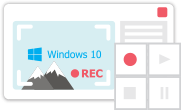视频编辑器
使用免费软件制作和编辑从贺卡到公司简介等不同复杂程度的视频。可以剪切和合并视频文件,应用音效和视效,添加滤镜,进行图像校正,创建幻灯片秀、添加背景音乐。使用多彩色色键和高级属性设置可以将视频升级到专业水平。软件支持所有常用的视频和音频格式。
视频转换器
此应用程序针对转换视频文件的格式,支持几乎所有常用的视频格式(读取和保存均可)。此外,程序可以大大简化转码任务,使视频能兼容特殊的多媒体设备,如iPhone、Microsoft Zune或Archos。操作非常简单,软件具有现代化界面以及所有处理视频必须的功能。
CD音频截取器
此音频工具用于从CD截取音频轨迹并存为任何格式。支持几乎所有常用的音频格式。此应用程序也能够从FreeDB服务器中获得音频轨迹的信息,并自动改名及更新文件的标记。
视频编辑器
视频转换器
音频转换器
CD音频截取器

多功能
一套免费视频软件包含丰富处理工具的种类。

高速
应用程序采用高速高效算法,适合于单核和多核处理器

实惠
VSDC视频软件可年免费下载到Windows系统操作的PC和笔记本。
- 作者:Amy Shao 2025年11月19日发布 欢迎了解期待已久的VSDC 10.2更新:这个新版本包含了令人难以置信的功能和重大改进,旨在为从爱好...
- 你好,我是Mattea Wharton,來自西雅圖的旅行影片創作者。整整三年,我一直在與那些會在我影片上加上難看浮水印的編輯軟體鬥爭,直到我發現了VSDC。這款...
- published Amy Shao 6/10/25 等待全新非凡体验的日子终于结束了!这次更新不只是又一个版本——而是VSDC 10.1! V...
- 这个节日季,迎接全新的开始!VSDC视频编辑器带来了最新的9.4版本。我们倾听了您的建议,专注于优化您最常用的工具,同时为明年更多创新功能奠定基础。 增強的...
Editor Scenes
Within the VSDC Video Editor, a scene functions as an integral component of a project. A single project can contain multiple scenes, enhancing the organization and structure of the content. When a new project is initiated, a scene is automatically created. Its position can be located in the Objects/Projects Explorer window.
To incorporate additional scenes or modify existing ones, simply right-click on the scene's name in the Projects Explorer window and select the desired option. Another way is to navigate to the Scenes tab on the Ribbon command bar: the same options are located there. The following set is available:
- New scene: this option allows you to add a new scene to your project. It's important to note that the new scene will appear in the Projects Explorer window.
- Load scene: this feature enables you to load a scene into your project that you have previously saved on your PC in the .vscn format.
- Save scene as...: this allows you to save the current scene on your computer in the .vscn format. This option is essential if you wish to transfer the scene to a different project.
- Pack scene...: this option lets you package the scene along with all the resources added to it and save it on your PC in the .vscn format. This is suitable if you plan to move the scene to another computer and continue working on it in VSDC. It's also useful if you're deleting media resources from your PC but want to keep them in the scene for future work.
- Remove scene: this allows you to delete the scene selected in the Projects Explorer window.
- Remove all scenes: This option enables you to delete all scenes in the Projects Explorer window.
- Move up: this feature allows you to move the selected scene in the Projects Explorer window up one level.
- Preview scene: this allows you to start a preview of the scene either in a separate window (the Preview Scene option) or in the preview window (the Play Scene option).
For even faster access to scene options, you can utilize hotkeys.
Scene objects
Every scene within the project has the capacity to accommodate an extensive array of resources, including standard video, audio, shapes, video effects, and audio effects. To facilitate seamless navigation through the scene's objects, it is advisable to utilize the Objects Explorer window. Positioned at the top of this window, it is a user-friendly search field, allowing for quick and efficient object location. Should the need arise to modify any specific object, a simple right-click on it unveils a menu with relevant options.
Scene properties
To configure the properties of a scene, click on its name in the Projects Explorer window. Automatically, on the right side of the editor, Properties window will display the parameters that can be modified:
- Scene settings: this section allows you to modify the scene's title, add a description, and control its visibility using the Enabled option. By default, Enabled is set to Yes. Switching it to No will omit the scene from the final project export.
- Scene's duration: here, you can define how long the scene lasts. With Automatically calculated set to Yes by default, the duration is automatically determined based on the total length of the media files within the scene. If you opt for No, this activates manual duration settings under Duration ms/frames, enabling you to specify the length precisely.
- Use project color: this option decides whether the scene will adopt the project's background color or have its own distinct color. Adjustments can be made through the Background color and Opacity level controls.
- Audio volume: this control allows you to adjust the volume of all sounds in this particular scene. The value is cumulative with similar parameters set in the project’s properties.
This software can be downloaded from Free Video Editor description page.
VSDC Video Editor Reviews & Ratings (Trustpilot, Capterra & Media)
VSDC Free Video Editor is rated 4.5/5 by real users on Trustpilot and Capterra. Here are a few reviews and quotes from creators and tech media.
Overall rating:4.5/5based on200+ reviews on Trustpilotand89 reviews on Capterra.
VSDC Free Video Editor is the best free video editor for Windows I’ve used, from color grading to picture-in-picture and cinematic results.
— Ejikeme Eloka Augustine
Source:Trustpilot
Easy-to-use interface and quick export to social media make VSDC a versatile video editing tool for everyday projects.
— Karen C., E-Learning
Source:Capterra
A feature-packed non-linear video editor for Windows that can compete with many paid video editing solutions.
— TechRadar
Source:TechRadar review
The free VSDC editor saved my YouTube channel – a powerful video editing software for chroma key, text effects and picture-in-picture.
— Paul Roberts
Source:Trustpilot
Fast and simple for YouTube videos with green screen, zoom, color tools and creative effects in one app.
— Marie R., Media Production
Source:Capterra
One of the best free video editor options for Windows users, ideal for GoPro, YouTube and family videos.
— VidProMom, YouTube creator
Source:Media reviews
I’ve been using VSDC for years; editing is easy and the final videos look great for my personal and professional projects.
— Long-time VSDC user
Source:Trustpilot
Great value and faster than many other free tools; I quickly create videos for YouTube, Instagram and Facebook with features my audience loves.
— Rabika B., Marketing & Advertising
Source:Capterra
VSDC offers many features you don’t usually find in free editors, including picture-in-picture, stabilization and modern codec support with no watermarks.
— Tech media review
Source:Media reviews

